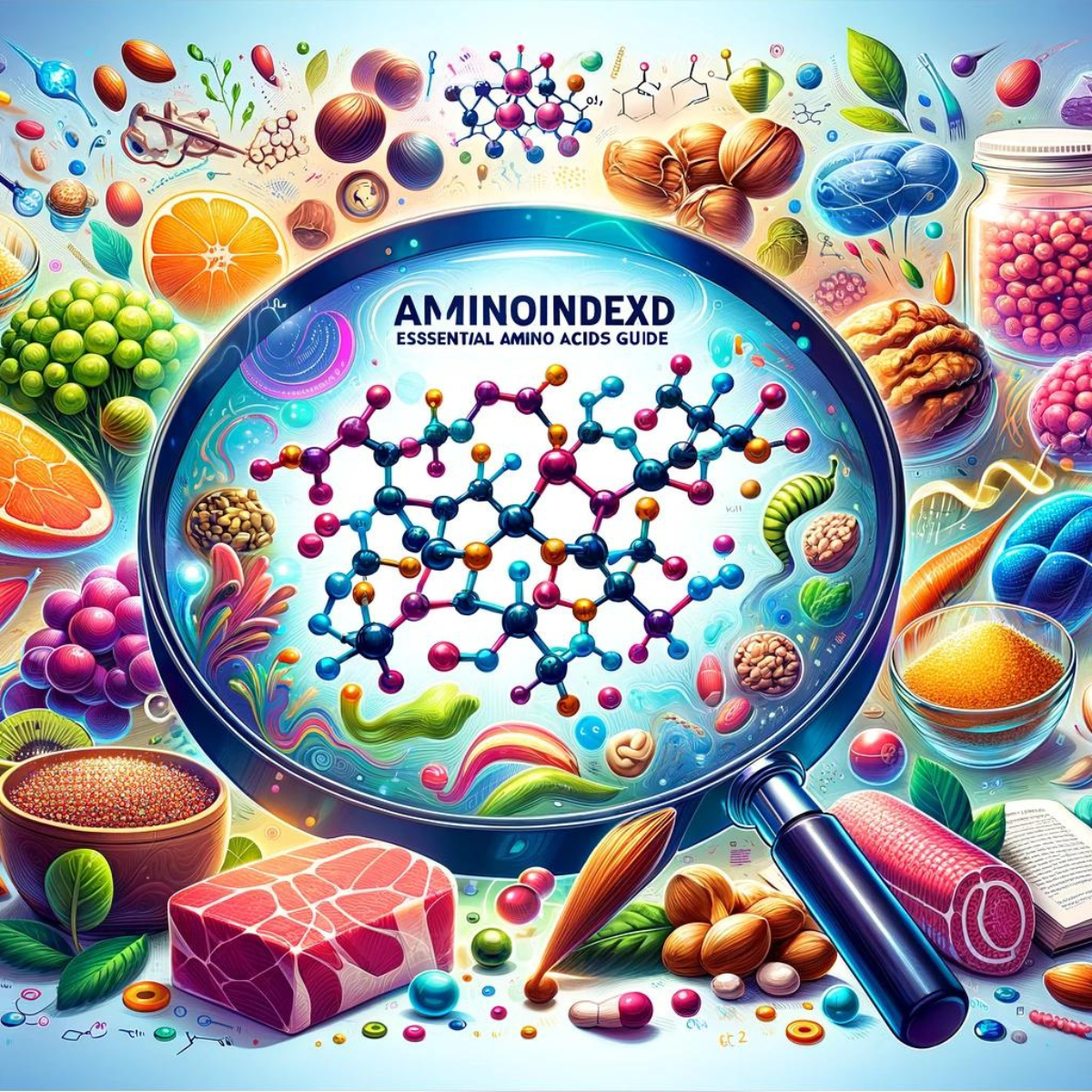
สารบัญ
- การแนะนำ
- หูดประเภทต่างๆ และเมื่อใดที่การรักษาแบบธรรมชาติจะได้ผลดีที่สุด
- พันธมิตรสมุนไพรเพื่อเสริมเห็ดในการดูแลหูด
- วิธีผสมเห็ดและสมุนไพรเพื่อดูแลหูด
- ความคาดหวังที่สมจริง: การเยียวยาด้วยธรรมชาติต้องใช้เวลานานเพียงใด?
- เรื่องราวความสำเร็จกับการรักษาหูดด้วยวิธีธรรมชาติ
- สูตรการรักษาหูดแบบทำเอง
- ความเข้าใจผิดทั่วไปเกี่ยวกับหูด
- ข้อควรระวังและแนวทางปฏิบัติที่ดี
- เมื่อใดจึงควรขอคำแนะนำจากผู้เชี่ยวชาญ
- บทสรุป
- กระทู้ที่เกี่ยวข้อง
- การปฏิเสธความรับผิดชอบ
- อ้างอิง
การแนะนำ
ยอมรับกันเถอะว่าหูดไม่ใช่บทสนทนาบนโต๊ะอาหาร แขกเล็กๆ ที่ไม่ได้รับเชิญเหล่านี้อาจปรากฏตัวขึ้นที่มือ เท้า หรือบริเวณอื่นๆ ที่คุณไม่อยากพูดถึง และมักจะอยู่เกินเวลาต้อนรับ ไม่ว่าหูดจะสร้างความเขินอาย ไม่สบายใจ หรือเพียงแค่รำคาญ หูดก็สามารถทำให้ใครๆ รู้สึกไม่มั่นใจได้ และหากคุณมาที่นี่ แสดงว่าคุณกำลังหาวิธีส่งหูดออกไป
ข่าวดีคือธรรมชาติอยู่เคียงข้างคุณเสมอ! แม้ว่าการรักษาแบบเดิมๆ จะได้ผล แต่ก็ไม่ได้น่าดึงดูดใจเสมอไป (ใครล่ะจะอยากแช่แข็งผิวหนังของตัวเองทิ้งไป) นั่นคือที่มาของการรักษาแบบธรรมชาติ ซึ่งนำเสนอแนวทางแบบองค์รวมที่อ่อนโยนกว่าในการจัดการกับหูด และหัวใจสำคัญของกลยุทธ์นี้ก็คือฮีโร่ที่ไม่มีใครคาดคิด นั่นก็คือ เห็ด ใช่แล้ว เชื้อราชนิดเดียวกันที่คุณใส่ในผัดผักก็สามารถช่วยจัดการกับหูดได้เช่นกัน โดยกระตุ้นระบบภูมิคุ้มกันของคุณให้แข็งแรงขึ้น
อย่างไรก็ตาม เห็ดไม่ได้ช่วยแก้ปัญหานี้เพียงลำพัง ด้วยความช่วยเหลือของสมุนไพร น้ำมัน และวิธีการรักษาตามธรรมชาติอื่นๆ ร่างกายของคุณก็สามารถฟื้นฟูผิวให้เรียบเนียนและมีสุขภาพดีได้ ดังนั้น จิบชาสักถ้วย (จะได้คะแนนพิเศษหากเป็นชาเห็ด!) และดำดิ่งสู่โลกธรรมชาติของวิธีรักษาหูด—พร้อมกับอารมณ์ขันเล็กน้อย วิทยาศาสตร์เล็กน้อย และความเห็นอกเห็นใจอีกมากมาย
หูดประเภทต่างๆ และเมื่อใดที่การรักษาแบบธรรมชาติจะได้ผลดีที่สุด
หูดแต่ละชนิดไม่เหมือนกัน หูดแต่ละชนิดมีรูปร่าง ขนาด และตำแหน่งที่แตกต่างกัน และการตอบสนองต่อการรักษาตามธรรมชาติก็อาจแตกต่างกันไป การทำความเข้าใจประเภทของหูดที่คุณกำลังเผชิญอยู่จะช่วยให้คุณเลือกวิธีการรักษาที่มีประสิทธิภาพมากที่สุดได้
- หูดสามัญ (Verruca Vulgaris)
- ลักษณะ: ตุ่มนูนหยาบ มักเกิดขึ้นที่มือ นิ้วมือ หรือเข่า
- สาเหตุ: เชื้อไวรัส HPV สายพันธุ์นี้จะติดเชื้อที่ชั้นนอกของผิวหนัง
-
วิธีการรักษาตามธรรมชาติที่ดีที่สุด:
- น้ำมันหอมระเหยทูจา: การใช้โดยตรงสามารถกำหนดเป้าหมายที่หูดได้ที่แหล่งที่มา
- ทิงเจอร์เชลิโดเนียม: ใช้ได้ดีกับหูดขนาดเล็กที่ดื้อต่อยา
- เห็ดหลินจือหรือเห็ดหางไก่งวง : เสริมระบบภูมิคุ้มกันเพื่อต่อสู้กับไวรัสภายใน
- หูดที่ฝ่าเท้า (Verruca Plantaris)
- ลักษณะ: ตุ่มเนื้อหนาและมีลักษณะด้านเกิดขึ้นที่ฝ่าเท้า หูดเหล่านี้อาจรู้สึกเจ็บหรือปวดเมื่อเดิน
- สาเหตุ: แรงกดจากการเดินหรือยืนทำให้หูดดันเข้าไปในผิวหนัง ซึ่งทำให้การรักษายากขึ้น
-
วิธีการรักษาตามธรรมชาติที่ดีที่สุด:
- ชาเปา ดาร์โก: รับประทานเพื่อลดการทำงานของไวรัส
- ทูจาที่เจือจางในน้ำมันพาหะ: ทาหลังจากทำให้หูดอ่อนตัวลงด้วยการแช่น้ำอุ่น
- ชาอัสตราคัลลัส: เสริมสร้างการตอบสนองภูมิคุ้มกันเพื่อกำหนดเป้าหมายไวรัส
- หูดแบน (Verruca Plana)
- ลักษณะที่ปรากฏ: การเจริญเติบโตแบบเรียบและด้านบนแบน มักเกิดขึ้นเป็นกลุ่มบนใบหน้า คอ มือหรือขา
- สาเหตุ: แพร่กระจายผ่านการสัมผัสโดยตรงหรือการโกนหนวด โดยเฉพาะในบริเวณที่บอบบาง
-
วิธีการรักษาตามธรรมชาติที่ดีที่สุด:
- ครีมคาเลนดูลา: อ่อนโยนพอสำหรับผิวบอบบาง มีฤทธิ์บรรเทาอาการระคายเคืองและต่อต้านไวรัส
- สารสกัดชาเขียว: สามารถใช้ภายนอกหรือรับประทานเนื่องจากคุณสมบัติต้านไวรัสที่มีประสิทธิภาพ
- แคปซูลอัสตราการัส : ช่วยเสริมสร้างภูมิคุ้มกันและป้องกันการแพร่กระจาย
- หูดรูปเส้นใย
- ลักษณะ: การเจริญเติบโตที่ยาวและแคบ มักพบบนใบหน้า รอบปาก จมูก หรือเปลือกตา
- สาเหตุ: เกิดจากสายพันธุ์ไวรัส HPV ที่เจริญเติบโตในสภาพแวดล้อมที่มีความชื้น ทำให้มักเกิดบริเวณใบหน้า
-
วิธีการรักษาตามธรรมชาติที่ดีที่สุด:
- ทิงเจอร์เชลิโดเนียม: ใช้ด้วยสำลีอย่างระมัดระวังเพื่อหลีกเลี่ยงการระคายเคือง
- สารสกัดชาเขียว : อ่อนโยนพอต่อการทาผิวหน้า
- ชาเห็ด : เสริมสร้างการป้องกันของร่างกายเพื่อช่วยป้องกันการเกิดซ้ำ
- หูดที่เล็บ
- ลักษณะที่ปรากฏ: ตุ่มเนื้อหยาบคล้ายดอกกะหล่ำที่เกิดขึ้นรอบ ๆ เล็บมือและเล็บเท้า อาจทำให้รู้สึกไม่สบายและขัดขวางการเจริญเติบโตของเล็บ
- สาเหตุ : มักแพร่กระจายผ่านการกัดเล็บหรือหนังกำพร้า ทำให้ HPV เข้าสู่ผิวหนังได้
-
วิธีการรักษาตามธรรมชาติที่ดีที่สุด:
- น้ำมันหอมระเหยทูจา: มีประสิทธิภาพในการรักษาหูดในพื้นที่แคบ
- ทิงเจอร์ Pau d'Arco: ช่วยลดการจำลองของไวรัสภายในร่างกาย
- เห็ดหลินจือหรือเห็ดหางไก่งวง: เสริมภูมิคุ้มกันเพื่อป้องกันการแพร่ระบาดเพิ่มเติม
เมื่อการเยียวยาด้วยธรรมชาติได้ผลดีที่สุด
- หูดขนาดเล็กที่แยกตัวออกมา: การเยียวยาตามธรรมชาติมีประสิทธิผลมากที่สุดสำหรับหูดที่ยังมีขนาดเล็กและยังไม่แพร่กระจายอย่างกว้างขวาง
- ระยะเริ่มต้น: การเริ่มการรักษาเมื่อหูดปรากฏครั้งแรกจะเพิ่มโอกาสในการรักษาสำเร็จ
- เน้นการเสริมภูมิคุ้มกัน: สำหรับบุคคลที่มีอาการซ้ำบ่อยๆ การเยียวยา เช่น เห็ด และ อะสตรากาลัส มีประโยชน์อย่างยิ่งในการเสริมสร้างภูมิคุ้มกันโดยรวม
การเยียวยาด้วยธรรมชาติจะได้ผลดีที่สุดเมื่อใช้เป็นประจำร่วมกับการรักษาสุขอนามัยที่ดีและการใช้ชีวิตอย่างมีสุขภาพดี สำหรับหูดที่เด่นชัดหรือเรื้อรัง อาจจำเป็นต้องใช้วิธีธรรมชาติร่วมกับการรักษาจากผู้เชี่ยวชาญเพื่อให้ได้ผลเร็วขึ้น
พันธมิตรสมุนไพรเพื่อเสริมเห็ดในการดูแลหูด
เมื่อคนส่วนใหญ่นึกถึงเห็ด พวกเขาจะนึกถึงรสชาติของส่วนผสมที่เพิ่มรสชาติให้กับซุปหรือผัดผัก ไม่ใช่เครื่องมือที่มีประสิทธิภาพสำหรับสุขภาพภูมิคุ้มกัน อย่างไรก็ตาม เห็ดสมุนไพรบางชนิดได้รับการยกย่องในยาแผนโบราณมาหลายศตวรรษว่ามีคุณสมบัติในการเสริมสร้างระบบภูมิคุ้มกัน ต่อสู้กับการติดเชื้อ และแม้แต่ช่วยในการรักษาผิวหนัง ซึ่งทำให้เห็ดเป็นพันธมิตรตามธรรมชาติในการรักษาหูด ซึ่งเกิดจากไวรัส Human Papillomavirus (HPV) และมักต้องได้รับการตอบสนองจากภูมิคุ้มกันที่แข็งแรงจึงจะหาย
พลังเสริมภูมิคุ้มกันของเห็ด
เห็ดสมุนไพร เช่น เห็ดหลิน จือ เห็ดหางไก่งวง และ เห็ดชิทาเกะ อุดมไปด้วยสารประกอบที่เรียกว่า เบต้ากลูแคน และ โพลีแซ็กคาไรด์ สารธรรมชาติเหล่านี้ช่วยเพิ่มการทำงานของเซลล์ภูมิคุ้มกัน ช่วยให้ร่างกายต่อสู้กับการติดเชื้อต่างๆ รวมถึงไวรัส เช่น HPV แม้ว่าเห็ดจะไม่ได้กำหนดเป้าหมายที่หูดโดยตรง แต่เห็ดเหล่านี้ก็ช่วยให้ระบบภูมิคุ้มกันมีเครื่องมือที่จำเป็นในการทำงานได้อย่างมีประสิทธิภาพมากขึ้น
- เห็ดหลินจือ (Ganoderma lucidum): เห็ดหลินจือเป็นที่รู้จักในชื่อ "เห็ดแห่งความเป็นอมตะ" เป็นสารปรับสภาพที่มีประสิทธิภาพซึ่งช่วยลดการอักเสบและเพิ่มภูมิคุ้มกัน โดยการสนับสนุนการป้องกันตามธรรมชาติของร่างกาย เห็ดหลินจือจะช่วยสร้างสภาพแวดล้อมที่หูดจะมีโอกาสเติบโตน้อยลง
- หางไก่งวง (Trametes versicolor): หางไก่งวงอุดมไปด้วยโพลีแซ็กคาไรด์-K (PSK) และมีชื่อเสียงในเรื่องความสามารถในการกระตุ้นการทำงานของระบบภูมิคุ้มกัน คุณสมบัติต้านไวรัสทำให้หางไก่งวงเป็นตัวเลือกที่ยอดเยี่ยมในการต่อสู้กับหูดของคุณ
- เห็ด ชิทาเกะ (Lentinula edodes) เห็ดยอดนิยมชนิดนี้ไม่ได้มีไว้รับประทานแค่ในมื้อเย็นเท่านั้น แต่ยังอุดมไปด้วยเลนติแนน ซึ่งเป็นสารประกอบที่ช่วยเสริมสร้างเซลล์ภูมิคุ้มกันและช่วยต่อสู้กับไวรัสอีกด้วย
มากกว่าภูมิคุ้มกัน: การบำรุงผิว
เห็ดบางชนิดยังมีสารต้านอนุมูลอิสระซึ่งช่วยซ่อมแซมผิวหนังที่เสียหายจากหูด เช่น เห็ดชาก้า อุดมไปด้วยเมลานินและสารประกอบอื่นๆ ที่ส่งเสริมการสร้างผิวหนังใหม่ ในขณะที่ คอร์ดิเซปส์ ช่วยเพิ่มพลังงานของเซลล์ ช่วยให้ผิวของคุณฟื้นตัวจากอาการอักเสบที่เกี่ยวข้องกับหูด
แม้ว่าเห็ดจะช่วยเพิ่มภูมิคุ้มกันได้อย่างมีประสิทธิภาพ แต่สมุนไพรบางชนิดก็มีคุณสมบัติพิเศษในการต่อสู้กับหูด พืชที่ผ่านการพิสูจน์แล้วเหล่านี้ถูกนำมาใช้ในยาแผนโบราณมาหลายศตวรรษเพื่อเสริมสร้างระบบภูมิคุ้มกัน ต่อสู้กับไวรัส และส่งเสริมการรักษาผิวหนัง เมื่อใช้ร่วมกับเห็ด พวกมันจะสร้างกลยุทธ์แบบองค์รวมที่มีประสิทธิภาพในการจัดการกับหูดโดยธรรมชาติ
ตะไคร้ (Thuja occidentalis)
มีคุณสมบัติต้านไวรัสและใช้เป็นส่วนประกอบในยาสมุนไพรในการรักษาการเติบโตของผิวหนัง รวมถึงหูด สมุนไพรที่มีประสิทธิภาพนี้ออกฤทธิ์โดยกำหนดเป้าหมายที่ไวรัส HPV ในบริเวณที่ติดเชื้อ กระตุ้นให้ระบบภูมิคุ้มกันต่อสู้กลับ ขณะเดียวกันก็ส่งเสริมให้หูดหลุดร่วงไปทีละน้อย
- ประโยชน์: กระตุ้นการตอบสนองภูมิคุ้มกันและลดปริมาณเนื้อเยื่อหูดโดยตรง
- วิธีใช้: ทาเอสเซนเชียลออยล์ทูจาที่เจือจางในน้ำมันพาหะ (เช่น น้ำมันมะพร้าวหรือน้ำมันมะกอก) ลงบนหูดโดยตรง ใช้เป็นประจำทุกวันเพื่อให้ได้ผลลัพธ์ที่สม่ำเสมอ หลีกเลี่ยงการทาลงบนผิวที่แตกหรือระคายเคือง
เชลิโดเนียม มาจูส
มักเรียกกันว่าเกรทเซแลนดีน สมุนไพรชนิดนี้ถูกนำมาใช้อย่างแพร่หลายเนื่องจากช่วยรักษาหูดและปัญหาผิวหนังอื่นๆ น้ำยางสดจากต้นพืชมีประสิทธิภาพโดยเฉพาะเมื่อใช้ทาเฉพาะที่บริเวณหูดเล็กๆ ที่ไม่ได้รับการรักษา
- ประโยชน์: ประกอบด้วยสารต่อต้านไวรัสและสมานผิวหนังที่กำหนดเป้าหมายที่ HPV และลดการเติบโตของหูด
- วิธีใช้: ทาลาเท็กซ์สดหรือทิงเจอร์ที่มีส่วนประกอบของสารคีลิโดเนียมลงบนหูดโดยตรง หลีกเลี่ยงบริเวณผิวหนังที่แข็งแรงโดยรอบ เพราะอาจทำให้เกิดการระคายเคืองได้
ตาตุ่ม (Astragalus membranaceus)
อะสตรากาลัสเป็นพืชสมุนไพรที่สำคัญของการแพทย์แผนจีน มีคุณสมบัติในการเสริมสร้างภูมิคุ้มกัน โดยออกฤทธิ์จากภายในสู่ภายนอก ช่วยให้ร่างกายต่อสู้กับการติดเชื้อไวรัส รวมถึงไวรัส HPV คุณสมบัติในการปรับตัวของอะสตรากาลัสยังช่วยลดผลกระทบจากความเครียดที่กดภูมิคุ้มกันอีกด้วย
- ประโยชน์: กระตุ้นการผลิตเม็ดเลือดขาวและเพิ่มการตอบสนองภูมิคุ้มกันเพื่อกำจัดหูดที่เกี่ยวข้องกับ HPV
- วิธีใช้: รับประทานอสตรากาลัสในรูปแบบชา แคปซูล หรือทิงเจอร์ทุกวันเพื่อเสริมสร้างภูมิคุ้มกัน ใช้ร่วมกับยาเสริมภูมิคุ้มกันอื่นๆ เพื่อให้ได้ผลสูงสุด
Pau d'Arco (Tabebuia impetiginosa)
Pau d'Arco เป็นพืชพื้นเมืองของอเมริกาใต้ สกัดมาจากเปลือกชั้นในของต้นลาปาโช มีคุณสมบัติต้านไวรัสอย่างมีประสิทธิภาพ จึงเป็นตัวเลือกตามธรรมชาติในการจัดการกับอาการที่เกี่ยวข้องกับไวรัส HPV สารประกอบที่ออกฤทธิ์คือลาปาชอล ได้รับการพิสูจน์แล้วว่าสามารถยับยั้งการจำลองของไวรัสและสนับสนุนการทำงานของระบบภูมิคุ้มกัน
- ประโยชน์: ลดการทำงานของไวรัสและการอักเสบ ช่วยให้ระบบภูมิคุ้มกันต่อสู้กับหูด
- วิธีใช้: ชงเปาดาร์โกเป็นชาหรือดื่มเป็นทิงเจอร์ ใช้เป็นประจำเพื่อเสริมสร้างภูมิคุ้มกันและต้านการอักเสบ
นำทุกสิ่งมารวมกัน
สมุนไพรเหล่านี้เมื่อนำมาผสมกับเห็ดที่ช่วยเพิ่มภูมิคุ้มกัน จะช่วยจัดการหูดได้อย่างมีประสิทธิภาพ แม้ว่าสมุนไพรแต่ละชนิดจะมีกลไกการทำงานที่เป็นเอกลักษณ์เฉพาะตัว แต่คุณสมบัติในการต่อต้านไวรัส ช่วยเพิ่มภูมิคุ้มกัน และปลอบประโลมผิวก็ช่วยเสริมซึ่งกันและกันได้อย่างดีเยี่ยม จึงช่วยให้มีผิวที่ใสและมีสุขภาพดีอย่างเป็นองค์รวมและมีประสิทธิภาพ
วิธีผสมเห็ดและสมุนไพรเพื่อดูแลหูด
แม้ว่าเห็ดและสมุนไพรแต่ละชนิดจะให้ประโยชน์ที่แตกต่างกัน แต่การใช้ร่วมกันจะทำให้เกิดแนวทางที่เสริมฤทธิ์กันซึ่งสนับสนุนการป้องกันตามธรรมชาติของร่างกายจากหลายแง่มุม กลยุทธ์แบบองค์รวมนี้สามารถปรับปรุงผลลัพธ์และปรับปรุงสุขภาพผิวโดยรวมได้ โดยการจัดการทั้งระบบภูมิคุ้มกันพื้นฐานและอาการที่มองเห็นได้ของหูด
กิจวัตรประจำวันในการเสริมสร้างภูมิคุ้มกัน
กิจวัตรประจำวันที่สม่ำเสมอถือเป็นสิ่งสำคัญในการจัดการกับหูดและป้องกันไม่ให้เกิดขึ้นอีก เห็ดและสมุนไพรสามารถเป็นส่วนหนึ่งของแผนการดูแลสุขภาพของคุณได้อย่างไร:
-
เห็ดเสริมพลังยามเช้า:
- เริ่มวันใหม่ของคุณด้วย ชาเห็ดหลินจือ หรือชา หางไก่งวง สักถ้วยเพื่อเติมพลังให้ระบบภูมิคุ้มกันและมอบสารต้านอนุมูลอิสระ
- อีกวิธีหนึ่งคือ รับประทานอาหารเสริมเห็ดหรือผงหากคุณต้องการเวลาเพิ่มเติม
-
ชาอัสตรากาลัสหรือแคปซูล:
- จิบชา อัสตรากาลัส หนึ่งถ้วยหรือทานแคปซูลขณะอาหารเช้าเพื่อเสริมสร้างภูมิคุ้มกันให้แข็งแรงยิ่งขึ้น
- สารปรับตัวนี้เข้ากันได้ดีกับเห็ด โดยเพิ่มประสิทธิภาพในการเสริมภูมิคุ้มกัน
-
การรักษาเฉพาะที่ด้วยทูจาหรือเชลิโดเนียม:
- หลังจากทำกิจวัตรประจำวันตอนเช้าแล้ว ให้ทา Thuja essential oil ผสมกับน้ำมันพาหะโดยตรงบนหูด หากใช้ ทิงเจอร์ Chelidonium หรือน้ำยางสด ให้แน่ใจว่าบริเวณนั้นสะอาดก่อนใช้
- ปิดด้วยผ้าพันแผลหากจำเป็น เพื่อให้การรักษาคงอยู่ในตำแหน่งและปกป้องผิวหนัง
-
ชาเปาดาร์โกในยามบ่าย:
- ชง ชา Pau d'Arco สักถ้วยเพื่อเพิ่มภูมิคุ้มกันในช่วงบ่าย สารประกอบต้านไวรัสในชาจะช่วยเสริมฤทธิ์ของเห็ดและสมุนไพร เช่น Astragalus
-
การประยุกต์ใช้หัวข้อตอนเย็น:
- ทา Thuja หรือ Chelidonium ซ้ำก่อนนอน สำหรับหูดที่มีขนาดใหญ่หรือดื้อยา ควรพิจารณาใช้คู่กับการประคบอุ่นเพื่อเปิดรูขุมขนและเพิ่มการดูดซึม
เคล็ดลับการใช้ชีวิตเพื่อประสิทธิภาพที่เพิ่มขึ้น
เพื่อเพิ่มประโยชน์ของเห็ดและสมุนไพรให้สูงสุด ควรผสมผสานการเปลี่ยนแปลงไลฟ์สไตล์เหล่านี้เข้าไปในกิจวัตรประจำวันของคุณ:
- รับประทานอาหารที่มีคุณค่าทางโภชนาการสูง: รับประทานอาหารที่มีสารต้านอนุมูลอิสระสูง เช่น ผักใบเขียว เบอร์รี่ และถั่ว เพื่อช่วยเสริมสร้างการทำงานของระบบภูมิคุ้มกัน
- อย่าลืมดื่มน้ำให้เพียงพอ: ดื่มน้ำให้มากเพื่อช่วยให้ร่างกายขับสารพิษและดูแลสุขภาพผิว
- จัดการความเครียด: ใช้วิธีการต่างๆ เช่น การทำสมาธิหรือออกกำลังกายเบาๆ เพื่อลดระดับคอร์ติซอล ซึ่งอาจไปกดภูมิคุ้มกันได้
- ฝึกสุขอนามัยที่ดี: รักษาหูดให้สะอาดและหลีกเลี่ยงการสัมผัสเพื่อป้องกันการแพร่กระจายไวรัสไปยังบริเวณอื่น ๆ ของร่างกาย
ความสม่ำเสมอคือกุญแจสำคัญ
การรักษาด้วยวิธีธรรมชาติต้องใช้เวลา และต้องทำอย่างสม่ำเสมอ ปฏิบัติตามกิจวัตรประจำวันของคุณ แม้ว่าจะไม่เห็นผลลัพธ์ทันทีก็ตาม เมื่อเวลาผ่านไป แนวทางหลายแง่มุมนี้สามารถช่วยลดขนาดของหูด เพิ่มภูมิคุ้มกัน และช่วยให้คุณมีผิวที่ใสและมีสุขภาพดี
ความคาดหวังที่สมจริง: การเยียวยาด้วยธรรมชาติต้องใช้เวลานานเพียงใด?
เมื่อต้องรักษาหูดด้วยวิธีธรรมชาติ ความอดทนเป็นสิ่งสำคัญอย่างยิ่ง ซึ่งแตกต่างจากการรักษาแบบเดิมๆ เช่น การแช่เย็นหรือการใช้กรด ซึ่งได้ผลรุนแรงกว่า การรักษาด้วยวิธีธรรมชาติ เช่น เห็ดและสมุนไพร จะช่วยสนับสนุนกระบวนการรักษาของร่างกาย ซึ่งหมายความว่าผลลัพธ์มักต้องใช้เวลาและต้องใช้ความพยายามอย่างต่อเนื่อง
สิ่งที่คาดหวัง
โดยทั่วไปแล้วแนวทางการรักษาแบบธรรมชาติจะใช้เวลา หลายสัปดาห์ถึงไม่กี่เดือน จึงจะเห็นผลชัดเจน ระยะเวลาที่แน่นอนขึ้นอยู่กับปัจจัยหลายประการ รวมถึง:
-
ประเภทของหูด:
- หูดขนาดเล็กที่อยู่บริเวณผิวเผิน (เช่น หูดธรรมดา) อาจตอบสนองได้เร็วกว่า
- หูดที่กว้างขวางหรือมีรากลึก เช่น หูดฝ่าเท้า อาจต้องใช้เวลาและการรักษาต่อเนื่องมากขึ้น
-
สุขภาพภูมิคุ้มกันของคุณ:
- ระบบภูมิคุ้มกันที่แข็งแรงสามารถช่วยกำจัดไวรัสได้เร็วขึ้น ในขณะที่ระบบภูมิคุ้มกันที่อ่อนแออาจทำให้การดำเนินโรคล่าช้า
-
ความสม่ำเสมอของการรักษา:
- การใช้ยารักษาอย่างสม่ำเสมอ เช่น น้ำมันหอมระเหยทูจา ชาอัสตรากาลัส หรือ ทิงเจอร์เชลิโดเนียม เป็นสิ่งจำเป็นต่อความสำเร็จ
-
การตอบสนองของผิวของคุณ:
- ผิวและระบบภูมิคุ้มกันของแต่ละคนแตกต่างกัน บางคนอาจเห็นผลภายในไม่กี่สัปดาห์ ในขณะที่บางคนอาจต้องใช้เวลาหลายเดือน
กำลังใจในการก้าวเดินต่อไป
เป็นเรื่องปกติที่จะรู้สึกใจร้อน โดยเฉพาะอย่างยิ่งเมื่อต้องเผชิญกับสิ่งที่เห็นได้ชัดและน่าหงุดหงิด เช่น หูด อย่างไรก็ตาม สิ่งสำคัญคือต้องจำไว้ว่าแนวทางการรักษาตามธรรมชาติจะได้ผลแบบองค์รวม ไม่เพียงแต่ช่วยลดอาการหูดเท่านั้น แต่ยังช่วยเสริมสร้างสุขภาพโดยรวมและภูมิคุ้มกันของคุณ ซึ่งจะช่วยลดโอกาสที่อาการจะกลับมาเป็นซ้ำ
การยึดมั่นกับกิจวัตรประจำวัน การรักษาความสม่ำเสมอ และการใช้แนวทางแก้ไขเหล่านี้ร่วมกับวิถีชีวิตที่มีสุขภาพดี (เช่น รับประทานอาหารที่มีคุณค่าทางโภชนาการและจัดการความเครียด) สามารถเพิ่มผลลัพธ์ได้อย่างมาก
เมื่อใดจึงควรประเมินแนวทางของคุณใหม่
หากคุณไม่เห็นการปรับปรุงใดๆ หลังจากผ่านไปไม่กี่เดือน หรือหูดเริ่มเจ็บปวด โตขึ้น หรือลุกลาม อาจถึงเวลาต้องปรึกษาผู้เชี่ยวชาญด้านการแพทย์ การรักษาด้วยวิธีธรรมชาติได้ผลดีที่สุดเมื่อเป็นส่วนหนึ่งของกลยุทธ์โดยรวม และในบางกรณี การรักษาแบบทั่วไปอาจจำเป็นสำหรับหูดที่รักษายาก
เรื่องราวความสำเร็จกับการรักษาหูดด้วยวิธีธรรมชาติ
แนวทางการรักษาตามธรรมชาติ เช่น เห็ดและสมุนไพร ถูกนำมาใช้มาหลายชั่วอายุคนเพื่อสนับสนุนสุขภาพและความเป็นอยู่ที่ดี แม้ว่าการเดินทางของแต่ละคนจะแตกต่างกัน แต่ประสบการณ์บางอย่างแสดงให้เห็นว่าแนวทางที่สอดคล้องและองค์รวมสามารถช่วยจัดการกับหูดได้อย่างไร ตัวอย่างเหล่านี้แสดงให้เห็นถึงศักยภาพของการผสมผสานเห็ดที่ช่วยเพิ่มภูมิคุ้มกันกับการรักษาด้วยสมุนไพรแบบเฉพาะจุดเพื่อคืนความเรียบเนียนและสุขภาพดีให้กับผิว
เรื่องราวเหล่านี้เน้นย้ำถึงวิธีการดูแลหูดอย่างถูกวิธีและเป็นธรรมชาติตั้งแต่การหดตัวของหูดที่ดื้อรั้นไปจนถึงการป้องกันการกลับมาเป็นซ้ำ เมื่อใช้แนวทางการรักษาที่เหมาะสมและมีความพากเพียร ก็สามารถบรรลุผลที่เห็นได้ชัด
คืนความเรียบเนียนให้กับผิวด้วยเห็ดและทูจา
ครูวัย 35 ปีต้องต่อสู้กับหูดเล็กๆ บนมือมานานหลายเดือน เธอรู้สึกอายที่จะจับมือกับคนอื่น จึงตัดสินใจลองใช้วิธีธรรมชาติ เธอเริ่มดื่ม ชาเห็ดหลินจือ ทุกวันเพื่อเสริมสร้างระบบภูมิคุ้มกัน และทาด้วย น้ำมันหอมระเหยทูจา ที่เจือจางด้วยน้ำมันมะพร้าวโดยตรงบนหูดทุกเช้าและเย็น
- ผลลัพธ์: ภายใน 6 สัปดาห์ เธอสังเกตเห็นว่าหูดเล็กลง และภายใน 3 เดือน หูดก็หายไปหมด เธอจึงดื่มชาเห็ดต่อไปเพื่อป้องกันไม่ให้กลับมาเป็นอีก
- – ซาร่าห์ บริสเบน
การจัดการหูดฝ่าเท้าด้วย Pau d'Arco
นักวิ่งวัย 29 ปีมีหูดที่ฝ่าเท้าที่รักษายาก การรักษาแบบดั้งเดิม เช่น การแช่แข็ง ไม่ถูกใจเขา จึงหันไปใช้วิธีการรักษาแบบธรรมชาติ เขาชง ชา Pau d'Arco วันละสองครั้งเพื่อช่วยให้ร่างกายต่อสู้กับไวรัสภายใน และประคบอุ่นที่เท้าก่อนจะรักษาหูดด้วย ทิงเจอร์ Chelidonium
- ผลลัพธ์: หลังจากการรักษาอย่างต่อเนื่องเป็นเวลาประมาณ 4 สัปดาห์ หูดที่ฝ่าเท้าก็เริ่มเล็กลง เมื่อสิ้นสุด 12 สัปดาห์ หูดก็เล็กลงอย่างเห็นได้ชัด และเขาสามารถวิ่งได้ตามปกติอีกครั้ง
- – จอห์น เมลเบิร์น
เสริมสร้างภูมิคุ้มกันเพื่อป้องกันหูด
คุณแม่วัย 40 ปีรายหนึ่งประสบปัญหาหูดขึ้นซ้ำที่นิ้วมือบ่อยครั้ง เธอเบื่อหน่ายกับการรักษาที่เน้นแต่การกำจัดหูด เธอจึงตัดสินใจแก้ไขที่ต้นเหตุ นั่นก็คือสุขภาพภูมิคุ้มกันของเธอ เธอจึงนำ ชาอัสตรากาลัส มาใช้ในชีวิตประจำวัน จับคู่กับ ผงเห็ดหางไก่งวงในสมูทตี้ และรับประทานอาหารที่มีสารอาหารสูง
- ผลลัพธ์: เมื่อเวลาผ่านไป 6 เดือน เธอไม่เพียงแต่เห็นการลดลงของการเติบโตของหูดใหม่เท่านั้น แต่เธอยังรู้สึกมีสุขภาพโดยรวมที่ดีขึ้นด้วย เมื่อภูมิคุ้มกันของเธอแข็งแรงขึ้น หูดก็หยุดกลับมาเป็นอีก
- – มาเรีย ซิดนีย์
การกำจัดหูดที่ดื้อรั้นด้วยอะสตรากาลัสและชาเขียว
พนักงานออฟฟิศวัย 50 ปีรายหนึ่งต่อสู้กับหูดที่นิ้วหัวแม่มือมาเป็นเวลานานกว่า 1 ปี หลังจากลองใช้การรักษาแบบไม่ต้องสั่งโดยแพทย์แต่ไม่ค่อยได้ผล เธอจึงตัดสินใจเน้นการเสริมสร้างภูมิคุ้มกันและกำจัดหูดด้วยวิธีธรรมชาติ เธอเริ่มดื่ม ชาอัสตรากาลัส ทุกเช้าเพื่อเสริมสร้างภูมิคุ้มกัน และทา สารสกัดชาเขียว โดยตรงที่หูดในตอนกลางคืน แล้วปิดทับด้วยผ้าพันแผลเล็กๆ
- ผลลัพธ์: ภายใน 8 สัปดาห์ หูดเริ่มเล็กลงอย่างเห็นได้ชัด เมื่อครบ 3 เดือน หูดก็หายไปหมด เหลือเพียงผิวที่เรียบเนียนและสุขภาพดี
- – แองเจล่า เพิร์ธ
สูตรการรักษาหูดแบบทำเอง
สำหรับผู้ที่รักการดูแลสุขภาพด้วยวิธีธรรมชาติ การทำยารักษาหูดเองที่บ้านอาจช่วยทั้งเพิ่มพลังและได้ผล สูตรอาหาร DIY ง่ายๆ เหล่านี้ใช้ส่วนผสมจากธรรมชาติ เช่น เห็ดและสมุนไพร เพื่อช่วยให้คุณจัดการกับหูดได้อย่างครอบคลุม วิธีทำง่ายและอ่อนโยนต่อผิว เหมาะอย่างยิ่งที่จะนำไปใช้ร่วมกับกิจวัตรการดูแลหูดของคุณ
- ชาเห็ดเสริมภูมิคุ้มกัน
ชานี้เป็นวิธีที่สมบูรณ์แบบในการเสริมสร้างระบบภูมิคุ้มกันของคุณในขณะที่ทำงานเพื่อกำจัดหูดจากภายในสู่ภายนอก
วัตถุดิบ:
- เห็ดหลิน จือแห้งหรือ เห็ดหางไก่งวง ผง 1 ช้อนชา
- น้ำ 2 ถ้วย
- ทางเลือก: น้ำผึ้ง 1 ช้อนชา (เพื่อความหวาน)
คำแนะนำ:
- ต้มน้ำ 2 ถ้วยตวงแล้วใส่ผงเห็ดลงไป
- เคี่ยวประมาณ 15–20 นาที เพื่อดึงสารอาหารออกมา
- กรองแล้วเทใส่ถ้วย เติมน้ำผึ้งหากต้องการ
- ดื่มทุกวันเพื่อเสริมสร้างภูมิคุ้มกันอย่างต่อเนื่อง
- น้ำมันหูดทูจา
น้ำมัน DIY นี้เหมาะอย่างยิ่งสำหรับการกำหนดเป้าหมายที่หูดโดยตรง น้ำมันหอมระเหย Thuja มีคุณสมบัติต่อต้านไวรัสซึ่งสามารถช่วยให้หูดหดตัวลงได้ในระยะยาว
วัตถุดิบ:
- น้ำมันหอมระเหยทูจา 5 หยด
- น้ำมันมะพร้าว หรือ น้ำมันมะกอก 1 ช้อนโต๊ะ
คำแนะนำ:
- ผสมน้ำมันหอมระเหย Thuja กับน้ำมันพาหะในภาชนะขนาดเล็ก
- ใช้ปริมาณเล็กน้อยทาโดยตรงบนหูดโดยใช้สำลี
- หากจำเป็น ให้ปิดด้วยผ้าพันแผล และพันซ้ำทุกวัน
- ลูกประคบชาเปาดาร์โก
สูตรนี้ผสมผสานประโยชน์ต้านไวรัสของชา Pau d'Arco เข้ากับพลังของการประคบอุ่นเพื่อทำให้หูดอ่อนตัวลงและเพิ่มการดูดซึม
วัตถุดิบ:
- เปลือกเปาดาร์โก 1 ช้อนโต๊ะ
- น้ำ 1 ถ้วย
- ผ้าสะอาดหรือแผ่นสำลี
คำแนะนำ:
- ต้มเปลือก Pau d'Arco ในน้ำ 1 ถ้วยและเคี่ยวประมาณ 10 นาที
- กรองชาแล้วพักไว้ให้เย็นลงจนอุ่น
- แช่ผ้าหรือสำลีในชาแล้วนำมาทาบริเวณหูดประมาณ 10–15 นาที
- ทำซ้ำทุกวันเพื่อผลลัพธ์ที่ดีที่สุด
- การประยุกต์ใช้ทิงเจอร์ Chelidonium
เชลิโดเนียม (เกรตเตอร์เซแลนดีน) มักใช้ในการดูแลหูด สูตรง่ายๆ นี้จะช่วยให้คุณได้รับประโยชน์ในการต่อต้านไวรัส
วัตถุดิบ:
- ทิงเจอร์ Chelidonium สักสองสามหยด
- สำลีก้าน
คำแนะนำ:
- ทำความสะอาดหูดและผิวหนังโดยรอบ
- จุ่มสำลีลงในทิงเจอร์เชลิโดเนียมแล้วทาลงบนหูดโดยตรง
- ปล่อยให้แห้งเองตามธรรมชาติหรือปิดด้วยผ้าพันแผล
- ใช้วันละ 2 ครั้ง จนกระทั่งหูดเริ่มหดตัว
- แผ่นแปะหูดชาเขียว
ชาเขียวอุดมไปด้วยสารต่อต้านไวรัสและถือเป็นยาทาภายนอกที่ดีเยี่ยมสำหรับอาการหูด
วัตถุดิบ:
- ชาเขียว 1 ซอง
- น้ำร้อน 1/2 ถ้วย
- สำลีแผ่นสะอาด
คำแนะนำ:
- แช่ถุงชาเขียวในน้ำร้อนประมาณ 5 นาที แล้วปล่อยให้เย็น
- จุ่มสำลีลงในชาแล้วกดลงบนหูด
- พันผ้าพันแผลไว้แล้วทิ้งไว้ประมาณ 1 ชั่วโมง
- ทำซ้ำทุกวันเพื่อผลลัพธ์ที่ดีที่สุด
สูตรอาหาร DIY เหล่านี้ผสมผสานส่วนผสมจากธรรมชาติและวิธีการเตรียมอาหารแบบง่ายๆ เพื่อช่วยให้คุณดูแลหูดได้อย่างครอบคลุม สูตรอาหารเหล่านี้สามารถนำไปปรับใช้กับกิจวัตรประจำวันของคุณได้อย่างง่ายดาย ทำให้การรักษาหูดของคุณเข้าถึงได้ง่ายขึ้นและมีพลังมากขึ้น
ความเข้าใจผิดทั่วไปเกี่ยวกับหูด
หูดเป็นโรคชนิดหนึ่งที่เต็มไปด้วยความเชื่อผิดๆ และความเข้าใจผิดๆ ที่ส่งต่อกันมาจากรุ่นสู่รุ่นหรือได้รับข้อมูลที่ไม่ถูกต้อง มาทำความเข้าใจกันด้วยการหักล้างความเชื่อผิดๆ ที่พบบ่อยที่สุดเกี่ยวกับหูดกันดีกว่า
ความเชื่อที่ 1: การสัมผัสกบหรือคางคกทำให้เกิดหูด
นี่คือความเชื่อที่โด่งดังที่สุดเกี่ยวกับหูด แต่ไม่เป็นความจริง หูดเกิดจากไวรัส Human papillomavirus (HPV) ไม่ใช่สัตว์สะเทินน้ำสะเทินบก แม้ว่ากบและคางคกอาจมีผิวหนังเป็นตุ่ม แต่ตุ่มของพวกมันไม่เกี่ยวข้องกับไวรัสที่ทำให้เกิดหูดเลย
ความเชื่อที่ 2: หูดเป็นสัญญาณของการไม่รักษาสุขอนามัย
หูดไม่เกี่ยวกับความสะอาดของร่างกาย ไวรัส HPV แพร่กระจายผ่านการสัมผัสโดยตรงกับผิวหนังหรือพื้นผิวที่ติดเชื้อ ซึ่งอาจเกิดขึ้นกับใครก็ได้ ไม่ว่าจะมีสุขอนามัยที่ดีหรือไม่ก็ตาม อย่างไรก็ตาม การรักษาความสะอาดและแห้งของผิวหนังจะช่วยลดความเสี่ยงในการแพร่กระจายไวรัสเมื่อมีหูด
ความเชื่อที่ 3: การตัดหูดออกช่วยแก้ปัญหาได้
การแคะหรือตัดหูดเพียงอย่างเดียวไม่สามารถกำจัดไวรัสที่ทำให้เกิดหูดได้ และอาจทำให้อาการแย่ลงด้วย การกระทำเช่นนี้อาจทำให้ไวรัสแพร่กระจายไปยังผิวหนังโดยรอบ ทำให้เกิดหูดเพิ่มขึ้น ควรใช้แนวทางการรักษาที่มีประสิทธิภาพหรือปรึกษาผู้เชี่ยวชาญเพื่อกำจัดไวรัสอย่างปลอดภัย
ความเชื่อที่ 4: หูดจะปรากฏเฉพาะที่มือและเท้าเท่านั้น
แม้ว่าหูดจะมักปรากฏที่มือและเท้า แต่ก็สามารถปรากฏได้ทุกที่บนร่างกาย รวมถึงใบหน้า ขา และแม้แต่อวัยวะเพศ ตำแหน่งขึ้นอยู่กับชนิดของไวรัส HPV และการแพร่กระจายของไวรัส
ความเชื่อที่ผิด 5: หูดเป็นสิ่งที่เกิดขึ้นถาวร
หูดอาจหายได้เอง แต่ไม่ค่อยถาวร หูดหลายชนิดจะหายได้เองเมื่อระบบภูมิคุ้มกันต่อสู้กับไวรัส อย่างไรก็ตาม การรักษาด้วยวิธีธรรมชาติ เช่น เห็ดและสมุนไพร หรือการรักษาทางการแพทย์สามารถเร่งกระบวนการนี้ให้เร็วขึ้นได้
ความเชื่อที่ 6: คุณไม่สามารถแพร่หูดให้กับตัวเองได้
น่าเสียดายที่หูดสามารถติดต่อไปยังผู้อื่นและตัวคุณเองได้ กระบวนการนี้เรียกว่า การฉีดเชื้อ เข้าร่างกายเอง ซึ่งเกิดขึ้นเมื่อไวรัสแพร่กระจายจากส่วนหนึ่งของร่างกายไปยังอีกส่วนหนึ่ง มักเกิดขึ้นจากการเกาหรือแคะหูด
ความเชื่อที่ 7: หูดเกิดขึ้นเฉพาะในเด็กเท่านั้น
หูดมักพบในเด็กมากกว่าเนื่องจากระบบภูมิคุ้มกันที่กำลังพัฒนา แต่ผู้ใหญ่ก็สามารถเป็นหูดได้เช่นกัน ในความเป็นจริง ใครก็ตามที่สัมผัสกับไวรัส HPV ก็สามารถเป็นหูดได้โดยไม่คำนึงถึงอายุ
ข้อควรระวังและแนวทางปฏิบัติที่ดี
ความปลอดภัยเป็นสิ่งสำคัญที่สุด:
- ควรทดสอบ การทายาเฉพาะที่ เช่น ทิงเจอร์ธูจาหรือเชลิโดเนียมบนผิวหนังบริเวณเล็กๆ ก่อนใช้เสมอ เพื่อให้แน่ใจว่าคุณจะไม่เกิดอาการแพ้
- เจือจางน้ำมันหอมระเหย (เช่น ทูจา) ด้วยน้ำมันพาหะเพื่อหลีกเลี่ยงการระคายเคืองผิวหนัง
- ควรใช้ความระมัดระวังในการใช้สารสกัดสมุนไพรหรือยารักษาต่างๆ หากคุณกำลังตั้งครรภ์ ให้นมบุตร หรือรับประทานยาใดๆ โปรดปรึกษาผู้ให้บริการด้านการแพทย์ก่อนใช้
หลีกเลี่ยงการแพร่ระบาดหูด:
- หูดสามารถติดต่อได้ หลีกเลี่ยงการสัมผัสโดยไม่จำเป็น และล้างมือให้สะอาดหลังจากรับการรักษา
- ปิดหูดด้วยผ้าพันแผลเพื่อลดความเสี่ยงในการแพร่กระจายไวรัสไปยังบริเวณหรือบุคคลอื่น
- หลีกเลี่ยงการใช้สิ่งของส่วนตัวร่วมกัน เช่น ผ้าเช็ดตัว ถุงเท้า หรือรองเท้า กับผู้อื่นในขณะที่คุณเป็นหูด
อดทนไว้:
- การเยียวยาตามธรรมชาติต้องใช้เวลาและใช้เป็นประจำจึงจะเห็นผลลัพธ์ หลีกเลี่ยงการแกะหรือตัดหูด เพราะอาจทำให้เกิดการระคายเคือง ทำให้เกิดแผลเป็น หรือไวรัสแพร่กระจาย
เสริมสร้างภูมิคุ้มกันของคุณ:
- จับคู่เห็ดและสมุนไพรกับการเปลี่ยนแปลงวิถีชีวิตที่ช่วยเสริมสร้างระบบภูมิคุ้มกันของคุณ:
- รับประทานอาหารที่มีคุณค่าทางโภชนาการสูงทั้งอาหารสมบูรณ์ ผักและผลไม้
- ออกกำลังกายสม่ำเสมอเพื่อกระตุ้นการไหลเวียนโลหิตและสุขภาพโดยรวม
- นอนหลับให้เพียงพอเพื่อให้ร่างกายมีเวลาซ่อมแซมและชาร์จพลังใหม่
เมื่อใดจึงควรขอคำแนะนำจากผู้เชี่ยวชาญ
แม้ว่าเห็ด สมุนไพร และวิธีการรักษาตามธรรมชาติอื่นๆ จะสามารถสนับสนุนการป้องกันของร่างกายและจัดการกับหูดได้อย่างมีประสิทธิภาพ แต่บางครั้งจำเป็นต้องได้รับการดูแลทางการแพทย์จากผู้เชี่ยวชาญ หูดนั้นแม้จะไม่เป็นอันตราย แต่บางครั้งอาจเป็นสัญญาณของปัญหาที่ร้ายแรงกว่าหรือต้องได้รับการรักษาที่รุนแรงกว่าเพื่อให้ได้รับการรักษาที่เหมาะสม
เมื่อใดควรปรึกษาแพทย์:
-
หูดเรื้อรังหรือดื้อยา:
หากหูดไม่ตอบสนองต่อการรักษาแบบธรรมชาติหรือยังคงอยู่เป็นเวลาหลายเดือน ควรปรึกษาผู้เชี่ยวชาญด้านการแพทย์ หูดบางชนิดอาจต้องได้รับการรักษาที่รุนแรงกว่า เช่น การบำบัดด้วยความเย็นหรือยาตามใบสั่งแพทย์
-
หูดที่เจ็บปวดหรือโตเร็ว:
แพทย์ควรตรวจหาหูดที่ทำให้เกิดความรู้สึกไม่สบายอย่างมาก มีเลือดออก หรือมีขนาดใหญ่ขึ้น เพื่อตัดสาเหตุอื่นๆ เช่น อาการทางผิวหนังหรือภาวะแทรกซ้อนอื่นๆ
-
หูดในบริเวณที่บอบบาง:
หูดที่ปรากฏบนใบหน้า อวัยวะเพศ หรือใกล้เล็บ อาจรักษาด้วยวิธีธรรมชาติได้ยาก และอาจต้องได้รับการดูแลเป็นพิเศษ
-
ระบบภูมิคุ้มกันที่บกพร่อง:
บุคคลที่มีระบบภูมิคุ้มกันอ่อนแอเนื่องมาจากโรคเรื้อรัง ยา หรืออาการอื่น ๆ ควรปรึกษาผู้ให้บริการด้านการแพทย์ก่อนที่จะพยายามจัดการกับหูดด้วยตนเอง
-
การวินิจฉัยที่ไม่แน่นอน:
หากคุณไม่แน่ใจว่าหูดที่โตขึ้นนั้นเป็นหูดหรือไม่ ควรไปพบแพทย์เพื่อตรวจวินิจฉัย โรคผิวหนังบางชนิด เช่น มะเร็งผิวหนังหรือการติดเชื้อรา อาจมีลักษณะคล้ายหูดได้
การรักษาโดยผู้เชี่ยวชาญสามารถเสริมการรักษาด้วยวิธีธรรมชาติได้อย่างไร
สำหรับหูดที่รักษายาก การรักษาโดยผู้เชี่ยวชาญ เช่น การรักษาด้วยความเย็น การประคบด้วยกรดซาลิไซลิก หรือการรักษาด้วยเลเซอร์ จะให้ผลลัพธ์ที่มีประสิทธิภาพ การรักษาเหล่านี้มักใช้ร่วมกับสมุนไพรและเห็ดที่ช่วยเพิ่มภูมิคุ้มกัน เพื่อสนับสนุนการรักษาโดยรวมและลดโอกาสที่จะกลับมาเป็นซ้ำ
การสร้างสมดุลระหว่างแนวทางธรรมชาติและแนวทางทั่วไป
ไม่มีวิธีรักษาหูดแบบเดียวที่ใช้ได้กับทุกคน แม้ว่าวิธีการรักษาแบบธรรมชาติจะอ่อนโยนและเป็นองค์รวม แต่การรักษาแบบแผนอาจบรรเทาอาการได้เร็วกว่าในกรณีที่รุนแรง แนวทางที่สมดุลซึ่งใช้ประโยชน์จากจุดแข็งของทั้งสองวิธีจะช่วยให้คุณดูแลผิวได้ดีที่สุด
บทสรุป
การจัดการกับหูดอาจเป็นเรื่องน่าหงุดหงิดและละเอียดอ่อน แต่ธรรมชาติมีวิธีแก้ปัญหาแบบองค์รวมที่อ่อนโยนมากมายที่จะช่วยเสริมสร้างสุขภาพผิวและภูมิคุ้มกันของคุณ การผสมผสานเห็ดที่ช่วยเพิ่มภูมิคุ้มกันกับสมุนไพร เช่น อะสตรากาลัส ทูจา เชลิโดเนียม และเปา ดาร์โก จะช่วยให้คุณมีกลยุทธ์ที่มีประสิทธิภาพในการจัดการกับหูดจากภายในสู่ภายนอกได้ การรักษาเหล่านี้ร่วมกับความสม่ำเสมอและการเปลี่ยนแปลงวิถีชีวิตสามารถช่วยลดขนาดของหูด ป้องกันการเกิดซ้ำ และปรับปรุงสุขภาพโดยรวมให้ดีขึ้นได้
แม้ว่าการรักษาด้วยวิธีธรรมชาติจะใช้เวลาพอสมควร แต่ก็เป็นทางเลือกที่ปลอดภัยและมีประสิทธิภาพสำหรับหลายๆ คน โปรดจำไว้ว่าการตอบสนองของแต่ละบุคคลจะแตกต่างกัน ดังนั้นความอดทนจึงเป็นสิ่งสำคัญ หากหูดของคุณยังคงอยู่ โตขึ้น หรือทำให้รู้สึกไม่สบายอย่างมาก อย่าลังเลที่จะปรึกษาผู้เชี่ยวชาญด้านการแพทย์เพื่อขอคำแนะนำ ด้วยการดูแลที่เหมาะสม คุณสามารถฟื้นคืนผิวที่ใสและมีสุขภาพดีและความมั่นใจที่ฟื้นคืนมาได้
กระทู้ที่เกี่ยวข้อง
การปฏิเสธความรับผิดชอบ
ข้อมูลในบทความนี้มีไว้เพื่อวัตถุประสงค์ทางการศึกษาและให้ข้อมูลเท่านั้น และไม่มีจุดประสงค์เพื่อทดแทนคำแนะนำทางการแพทย์ การวินิจฉัย หรือการรักษาจากผู้เชี่ยวชาญ โปรดขอคำแนะนำจากแพทย์หรือผู้ให้บริการด้านสุขภาพที่มีคุณสมบัติเหมาะสมเสมอหากคุณมีคำถามใดๆ เกี่ยวกับอาการป่วยหรือการรักษาใดๆ การพึ่งพาข้อมูลใดๆ ในบทความนี้ถือเป็นความเสี่ยงของคุณเอง
อ้างอิง
-
เชื้อโรค
- Roda, A. และคณะ “บทบาทที่เป็นไปได้ของสารต้านอนุมูลอิสระในการรักษาการติดเชื้อ Human Papillomavirus และภาวะแทรกซ้อนที่เกี่ยวข้อง”
- เผยแพร่ใน Pathogens , 2024. สืบค้นเมื่อ 23 พฤศจิกายน 2024 จาก https://www.mdpi.com/2076-0817/12/3/416 .
-
ชีวิต
- Kim, S. และคณะ “ผลการปรับภูมิคุ้มกันของโพลีแซ็กคาไรด์จากเห็ดต่อการติดเชื้อไวรัส”
- เผยแพร่ใน Life , 2024. สืบค้นเมื่อ 23 พฤศจิกายน 2024, จาก https://www.mdpi.com/2075-1729/13/1/244 .
-
โมเลกุล
- Ferreira, S. และคณะ "สารประกอบจากธรรมชาติที่มีฤทธิ์ต้านไวรัส HPV"
- เผยแพร่ใน Molecules , 2024. สืบค้นเมื่อ 23 พฤศจิกายน 2024 จาก https://www.mdpi.com/1420-3049/25/22/5416 .
-
วารสารวิทยาศาสตร์โมเลกุลนานาชาติ
- Lee, Y. และคณะ “การประยุกต์ใช้ Astragalus ในการรักษาโรคภูมิคุ้มกัน”
- ตีพิมพ์ใน International Journal of Molecular Sciences , 2024. สืบค้นเมื่อ 23 พฤศจิกายน 2024 จาก https://www.mdpi.com/1422-0067/23/16/9241 .
-
ไซแอนซ์ไดเรกต์
- “ทางเลือกในการรักษาหูดบริเวณอวัยวะเพศและการใช้สมุนไพร”
- ดึงข้อมูลเมื่อวันที่ 23 พฤศจิกายน 2024 จาก https://www.sciencedirect.com/topics/medicine-and-dentistry/genital-wart
-
ห้องสมุดสุขภาพเมาท์ไซนาย
- "เปา ดาร์โก"
- ดึงข้อมูลเมื่อวันที่ 23 พฤศจิกายน 2567 จาก https://www.mountsinai.org/health-library/herb/pau-darco
-
วารสารนานาชาติวิจัยสิ่งแวดล้อมและสาธารณสุข
- Li, H. และคณะ “บทบาทของการเยียวยาตามธรรมชาติในการติดเชื้อผิวหนัง”
- ตีพิมพ์ใน International Journal of Environmental Research and Public Health , 2024. สืบค้นเมื่อ 23 พฤศจิกายน 2024 จาก https://www.mdpi.com/1660-4601/17/5/1540 .
-
ข่าวทางการแพทย์วันนี้
- “การกำจัดหูดที่แข็งแรงที่สุด: ภาพรวมของทางเลือกในการรักษา”
- ดึงข้อมูลเมื่อวันที่ 23 พฤศจิกายน 2567 จาก https://www.medicalnewstoday.com/articles/strongest-wart-remover .
-
สำนักพิมพ์ฮาร์วาร์ดเฮลท์
- “วิธีการกำจัดหูด”
- ดึงข้อมูลเมื่อวันที่ 23 พฤศจิกายน 2567 จาก https://www.health.harvard.edu/diseases-and-conditions/how-to-get-rid-of-warts



















